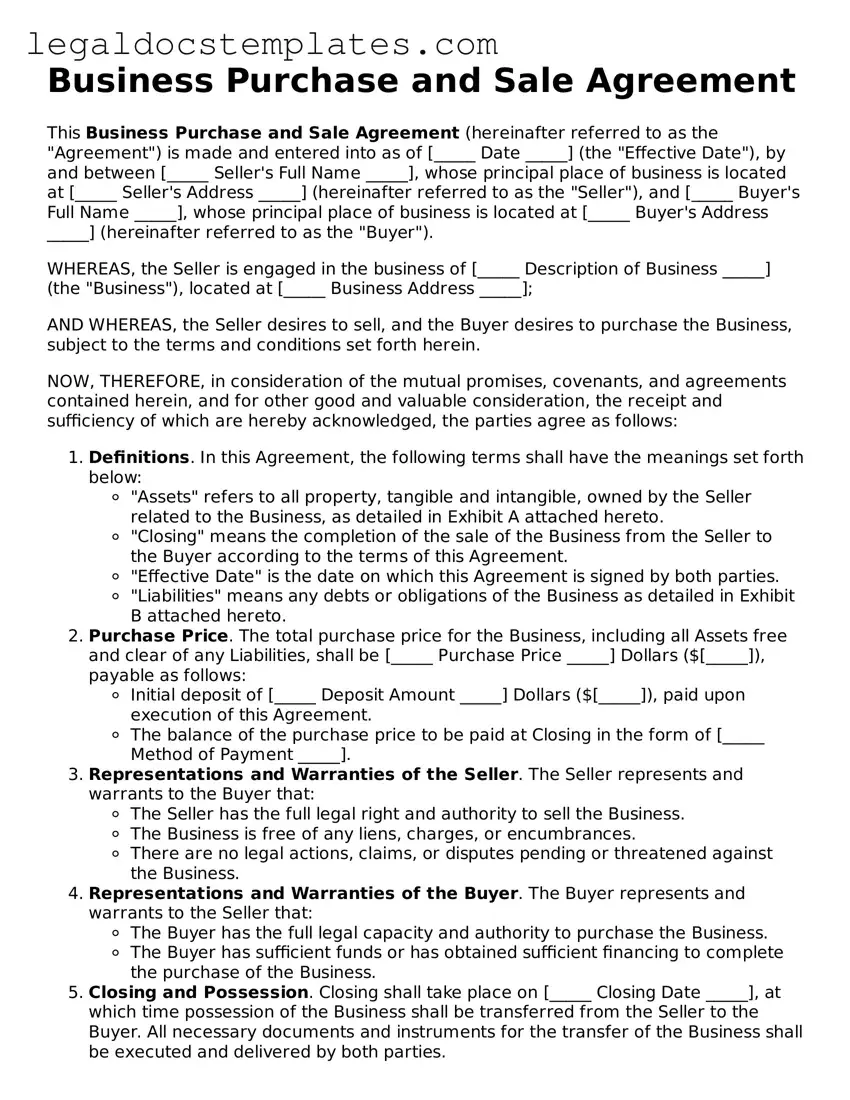The Asset Purchase Agreement, similar to a Business Purchase and Sale Agreement, delineates the terms under which assets of a business are sold and transferred from the seller to the buyer. This document focuses specifically on the assets, rather than the entire business, distinguishing it by its focus on tangible and intangible items like equipment, inventory, and intellectual property, rather than the business entity itself.
The Stock Purchase Agreement shares common ground with the Business Purchase and Sale Agreement, mainly in its function to transfer ownership. Instead of buying the business outright, the buyer acquires shares or stock in the company, effectively taking control or a significant stake in its operations. The specificity of the Stock Purchase Agreement to equity transactions sets it apart, highlighting the method of acquisition rather than the broad transfer of business ownership.
The Membership Interest Purchase Agreement is akin to the Business Purchase and Sale Agreement in the context of LLCs (Limited Liability Companies). It governs the sale and transfer of membership interest in an LLC from one party to another. This type of agreement is specific to LLCs, dealing with the transfer of members' interests, which may include voting rights, profit shares, and the ownership interests, rather than the purchase of the business as a whole or its assets specifically.
The Merger Agreement is closely related, detailing how two separate entities combine to form a single legal entity. This document delineates the terms, conditions, and the process of merging, including how assets and liabilities are managed post-merger. Unlike a straightforward Business Purchase and Sale Agreement, a Merger Agreement involves a more complex reorganization of businesses, often aimed at growth or consolidation strategies.
The Joint Venture Agreement is another document that bears similarity, particularly in how it facilitates business cooperation. It establishes a new entity owned by two or more parties, delineating their responsibilities and share in the venture. Although not a direct sale or purchase document, it involves the mutual agreement to operate a combined business effort, overlapping with the collaborative aspects of business purchases or sales.
The Franchise Agreement parallels the Business Purchase and Sale Agreement in how it allows for the operation of a business under a franchisor’s model, branding, and guidance. It specifies the terms under which a franchisee operates, differing by focusing on the rights to use business models and brands rather than transferring ownership of a business entity or its assets.
The Commercial Lease Agreement, while primarily a document dictating the terms of a property lease for business operations, intersects with the concept of buying and selling a business through its provision for the physical location where the business operates. The agreement differs as it does not involve the transfer of business ownership or assets but is crucial for businesses that operate from leased premises.
The Business Loan Agreement shares a connection in the context of financial arrangements for business operations. It outlines the terms under which a business borrows money, incorporating elements like interest rates, repayment plans, and collateral. Unlike the purchase and sale of a business, this document's purpose is to facilitate the financing of business activities, expansion, or the purchasing of assets.
The Non-Disclosure Agreement (NDA) overlaps with business purchase scenarios as it often precedes or accompanies agreements to protect confidential information exchanged during negotiations. Though fundamentally a confidentiality agreement, its use in the context of business sales to safeguard sensitive information under negotiation links it indirectly to the processes of buying and selling businesses.
